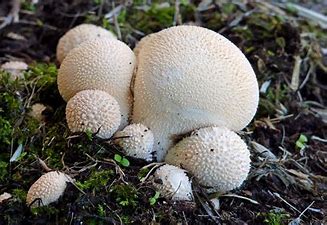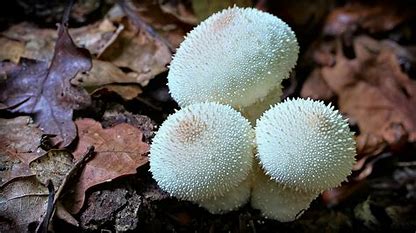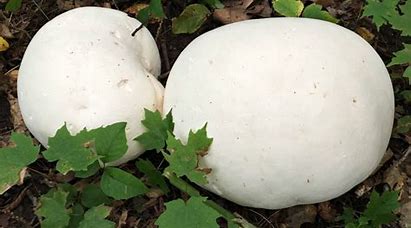Long before my venture into the foraging world I was vaguely aware of the edibility of the common yard puffball. In general, my family was averse to the harvesting of wild mushrooms. However, the puffball did receive notable mention from my grandmother when I was a child. That was the first and for a long-time last mention of wild edible mushrooms outside of course of the very popular morel.
As I began to explore the world of wild mushroom hunting the puffball, being common in my area, was a great fist run at the collection and preparation of edible mushrooms. It took very little research to understand the identification and edibility of these little white wonders and again in my rea the were quite abundant. So, with eager anticipation of my first wild foraging experience, I gatherer the first bunch to pop up in the yard, cut them in half to ensure they were a pure white, and brought them home to prepare my first wild foraged treat.
The key I think to fully enjoying your wild harvests the first time is to keep it simple. So, for my first taste of these little white gems, I sauteed them in a little butter and salt. Nothing fancy and just a touch of salt to ensure I was able to experience the actual flavor of the mushroom. Now, those of you that have sampled these already know what I learned later. That is, that the true greatness of the puffball mushroom, especially for beginning foragers is that they have an extremely light flavor and absorb the flavor of whatever you cook them with. So, at first sample they were very mild, a hint of salt, and I would say a slight nutty flavor. Perfect for someone new to and unsure of the wild edible mushroom world.
Since that first trial I have expanded my foraging way beyond the simple puffball, however finding them today is still as joyful as it was in the beginning. Let’s take a quick look at just a few species of this wonderful mushroom.
Western Lawn Puffballs: Vascellum Pratense
This little beauty is the most common puffball and is often found in lawns, golf courses, and fields throughout North America and around the world. This can be turban shaped with a white to tannish top that wears away to expose the metallic brown spore sac. As with most true puffballs it is edible if the flesh inside is white. The predominant season for these seems to be in the fall and depending on your location that may run from September through November. A simple mushroom with no identifiable flavor of their own they make a nice addition to steak, pork, or chicken tips and will pick up the flavor of whatever seasonings you choose.

Pear Shaped Puffball: Lycoperdon Pyriforme
Another widely distributed puffball in North America and found throughout the world. This choice edible grows in mass on decaying logs, stumps, and wood debris in the fall. It is pear shaped and develops pores at the top that can be yellow brown with warts and granules. The spore mass is white but becomes greenish yellow to olive brown eventually opening at the top. Gather when immature and pure white. This one will show up a bit earlier like July and again run into November. Again, a choice edible when the flesh inside is white that has a more defined flavor of its own and can be used in a wide variety of recipes.

Gem Studded Puffball: Lycoperdun Perlatum
Again, a choice edible distributed throughout North America and across the globe. This round to turban shaped gem has a slightly elongated base covered with both long and short pines. The spore mass is again white becoming green tinged even brownish as it ages. It is often found in open woods, along roadsides, and on the ground in urban areas from July through October. It is easily identified, and any look alike will have purplish to brown spores. Again, a choice edible if white throughout.

Giant Puffball: Calvatia Gigantea
Any discussion about puffballs would be incomplete without this prized puffball. A choice edible with versions again growing throughout North America and Europe. The Lycoperdun Perlatum is said to grow from East North America west to Ohio, but I have personally found them in Minnesota. These huge spheres are smooth and white in their youth cracking irregularly with maturity. Insides they are again white when young turning yellow to brown with age. You can find these alone, in arcs, or fairy wings in open woods, pastures, and urban areas from late May to October depending on your area. This is an excellent edible that can be sauteed or batter fried. I love to slice them about a quarter to half inch thick and freeze the slices individually. When ready to prepare I take them out, cover them in a topping like diced tomato and basil or meat and cheese then bake, or air fry them.
Keep in mind when foraging for any of these that the key to edibility in each of them is the pure white insides. Any discoloration or odd shapes inside mean you have one past its prime or a young version of a non-puffball. This article is just a starting point for you and should not be used solely for identification. Always use multiple references including field guides and local experts when identifying wild mushrooms.
These are great starter edible mushrooms however there are other wonderful versions of this wild edible mushrooms to discover. Start with these and as you search for them you may discover many more wild edible mushroom wonders.
- My Top Three Mushroom Field Guides

I want to to thank you for this good read!! I certainly loved every little bit of it. I have you bookmarked to look at new things you postÖ